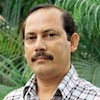The chief minister outwitted the BJP and created a Hindu surge for the Congress party
Assam chief minister Tarun Gogoi has scripted his success story as the second politician after BP Chaliha to lead the government for the third consecutive term. Soon after his oath-taking on May 18, Gogoi commented that the voters of Assam elected him for all the development works, stability and peace initiative (with various militant groups, including the ULFA).
The outcome of Assam election, where Gogoi’s party Indian National Congress established a convincing victory, was however astonishing.
The massive win by the ruling Congress, which increased its tally up to 78 (out of 126 seats) in the legislative assembly baffled the opposition leaders as well as political observer and media commentators. There was a general feeling that the Congress would emerge as the single largest party after May 13 counting day, but very few really had imagined that the party (with 53 MLAs in 12th state legislative assembly) would be able to put such an outstanding show.
On the other hand, the main opposition party Asom Gana Parishad, which accused the state government for its involvement in the Rs 1,000 crore scam in NC Hills district, faced a humiliating defeat reducing its tally to 10. Similarly, the Bharatiya Janata Party, which expected so much from Assam election, ended displaying a poor performance.
Nearly two crore electorate of the state exercised their franchises without any fear and open favouritism to any particular party. The overall percentage of the two-phase (April 4 and April 11) poll was recorded as high as 76 per cent. Moreover, no major political alliances were observed in the pre-poll scenario. Parties like the Congress, BJP and All India United Democratic Front contested the election without pre-poll allies. Only the AGP had pre-poll alliances with ethnic parties like Bodo People’s Progressive Front, Gana Shakti and Autonomous State Demand Committee.
With many promises to the people, Chief Minister Gogoi also played the Hindu card cleverly during the campaigning, when he commented that the Hindu Bangladeshi migrants should be considered as refugees. Gogoi, however, stated clearly that the Muslim people migrating from Bangladesh must not get sympathy. The message was seemingly clear that Gogoi would never compromise with the interest of indigenous people.
The BJP tried its best to garner support for their candidates in Assam. But yet the party performed very poor in Barak valley, which was identified as its stronghold. The Bengali Hindu voters of the valley (around 20 percent of Assam’s three crore population) bordering Bangladesh slowly turned to the Congress (more precisely Tarun Gogoi) for the stability and development. The BJP continued winning in Barak valley in the last two assembly polls (2001 and 2006), but this time the party drew a blank. The Congress candidates won 13 seats (out of 15) in the south Assam basin, where AGP and AIUDF shared the rest two seats. The infighting among BJP leaders in Barak valley and also division of votes between the BJP and AGP paved way for success by the Congress candidates there. The BJP had finally won only five seats in the Brahmaputra valley. The state BJP president Ranjit Dutta too faced the defeat.
The saffron party, for the first time, held its national executive at Guwahati in January 2011, where high profile leaders attended. In fact, the party president Nitin Gadkari started the poll campaigning for four states (Assam, West Bengal, Tamil Nadu and Kerala) and one union territory Puducherry from Guwahati. Later, all the senior BJP leaders including LK Advani, Rajnath Singh, V Naidu, Ravi Shankar Prasad, Shahnawaz Hussain with chief ministers Narendra Modi, Arjun Munda and BS Yeddyurappa campaigned in Assam.
The worst performance was showed by the AGP. Emerged out of the historic Assam agitation (1979 to 1985), the party came to power for two terms (1985 to 1990 and 1996 to 2001), but could not maintain its stand on the core issue of illegal Bangladeshis. From 65 MLAs in 1985 Assembly election, the party started losing its number of legislators in succeeding elections. This time the party could retain only 10 seats (it had 24 MLAs in 12th assembly), meaning the AGP has lost the status of main opposition party in the assembly.
The AIUDF has, however, increased its tally up to 18 this time and emerged as the second largest party in the assembly after the Congress. The state (where Muslims constitute 30 percent of total electorate) also increased the number of Muslim MLAs up to 28 (it was 25 in 2006 election) in the assembly. Of course, they represent various parties like the AIUDF, Congress and AGP.
Many political analysts believe that Gogoi’s initiative for peace talks with leaders of United Liberation Front of Asom, National Democratic Front of Bodoland, Dima Halam Daoga helped the party in garnering votes.
Gogoi was also instrumental in establishing the fact that the Congress is no more solely dependent on Muslim votes today as it was in earlier time. In fact, the Congress was once known as the party of Ali (read Muslim). But the shrewdness of Gogoi has finally attracted the mainstream Assamese voters (predominantly Hindu) for the party and the political observers strongly believe that the national party was voted repeatedly and predominantly by those mainstream Assamese voters.
